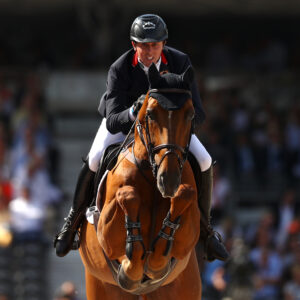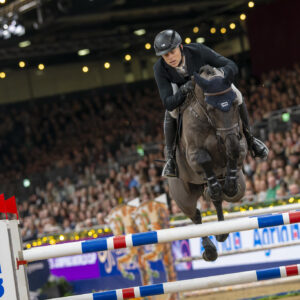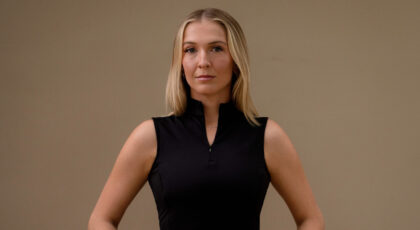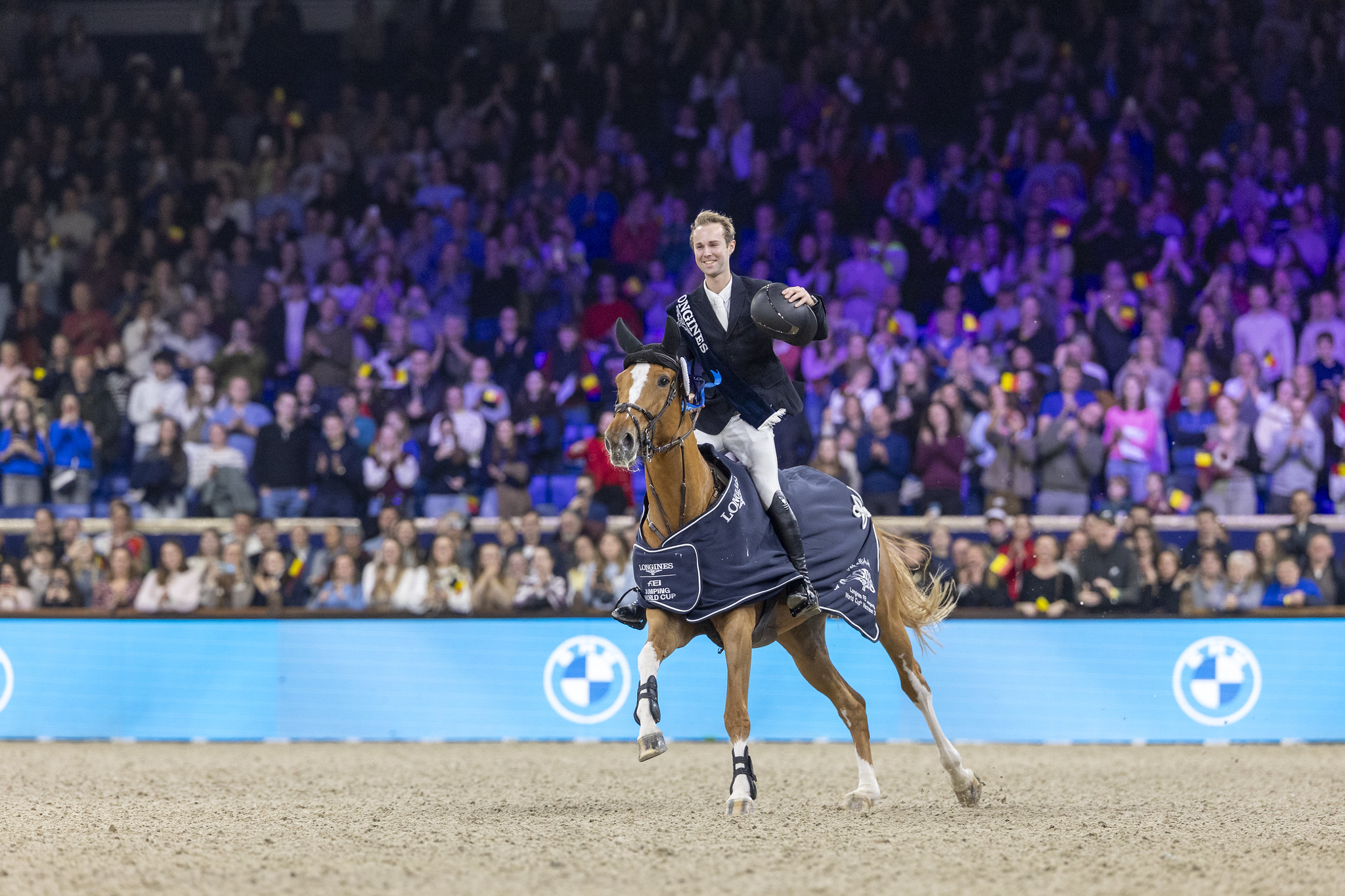Admit it: it is one of the trickiest lines to walk as a horse owner and rider. Most of us want our horses to be happy, comfortable, and love us the way we love them. We certainly don’t want to hurt or scare them. And while it sounds simple enough to “be nice” when it comes to riding and training, that line we’re walking sometimes gets blurred by goals, ambition, or even plain old horses being horses.
How do you keep interactions with a 1,200 pound animal safe? By setting firm and fair boundaries. How do you set boundaries and still “be nice”?
In her book Dressage with Mind, Body & Soul, founder of the world-renowned Tellington Method Linda Tellington-Jones discusses this quandary, and some of the ways she and her late friend Dr. Reiner Klimke employed to ensure both in their work with horses.
“Just because you love your horse, and just because you are nice to him doesn’t mean you can’t establish safe and fair boundaries,” Tellington-Jones writes. “This, I feel, is key to horse training of any sort….So often riders make the mistake of assuming that in order to be kind, they must allow the horse to do whatever he wants, or make the horse utterly dependent upon them. I feel that this is a trap. I can’t tell you the number of dressage horses I have ridden who, when I’ve dropped all contact with their mouth, were utterly confused and unable to function. They literally stopped in their tracks or veered every which way.

Photo by Annalena Kuhn
“I learned from my first husband Wentworth Tellington the old cavalry test that a horse, once started, should be able to travel on a straight line without support or guidance from the rider, until he is told to turn or stop. I doubt that 80% of today’s dressage horses can do this, and I feel it should be absolutely fundamental to any kind of horse training, but especially dressage.
“In the last clinic he taught in the United States before he passed away, seven-time dressage Olympian Dr. Reiner Klimke required riders to enter the arena on a loose rein at the trot. This exercise was challenging for most of the riders and impossible for several.”
In your next schooling session, go ahead and try this exercise! Find out if by “being nice” to your horse you’ve made him too dependent upon you for all direction.
“I had the honor of consulting at ringside with Dr. Klimke as he worked with the horses and riders during this four-day symposium at the Los Angeles Equestrian Center (LAEC) in California in 1999,” Tellington-Jones goes on. “We worked with 12 horse-and-rider teams, from First Level to Grand Prix, and spoke to approximately 2,000 auditors each day.
“It was a distinct pleasure to work with Dr. Klimke. His way of riding and training made the horses happy, and the work I did with TTouch bodywork and Tellington Method Ground Exercises and Ridden Work was magnified through his additions in the saddle or via instruction of the riders. Our focus over the four days was to develop trust between horse and rider and improve the horse’s confidence, as well as promote rhythm and relaxation through generous warm-up and cool-down periods.
“’Be nice to your horse,’ Dr. Klimke told participants, ‘then you have a right to ask him to work a little.’ He continuously reminded the riders to ‘give’ with the reins (‘release’); touch the horse on the neck with a kind hand; and invite the horse to stretch, use his body, and ‘be a horse’ for a few moments in between exercises.

Tellington-Jones and Dr. Klimke (center) with the clinic in 1999. Courtesy of Linda Tellington-Jones.
“We both knew that you can’t expect a dressage horse to perform in an atmosphere of fear, and this is why our methods dovetailed so well. Whether I was doing a particular TTouch or Dr. Klimke was asking for a certain movement, if the horse found it difficult or uncomfortable, Dr. Klimke would stop, give the horse a moment to process, and re-approach. This built the horse’s confidence a little more and earned a bit more of his trust.”
So stride that line: Be nice to your horse, yes…then, as Dr. Klimke says, you have a right to ask him to work a little.

This excerpt from Dressage with Mind, Body & Soul by Linda Tellington-Jones is reprinted with permission from Trafalgar Square Books.


 January 18, 2017
January 18, 2017 



























